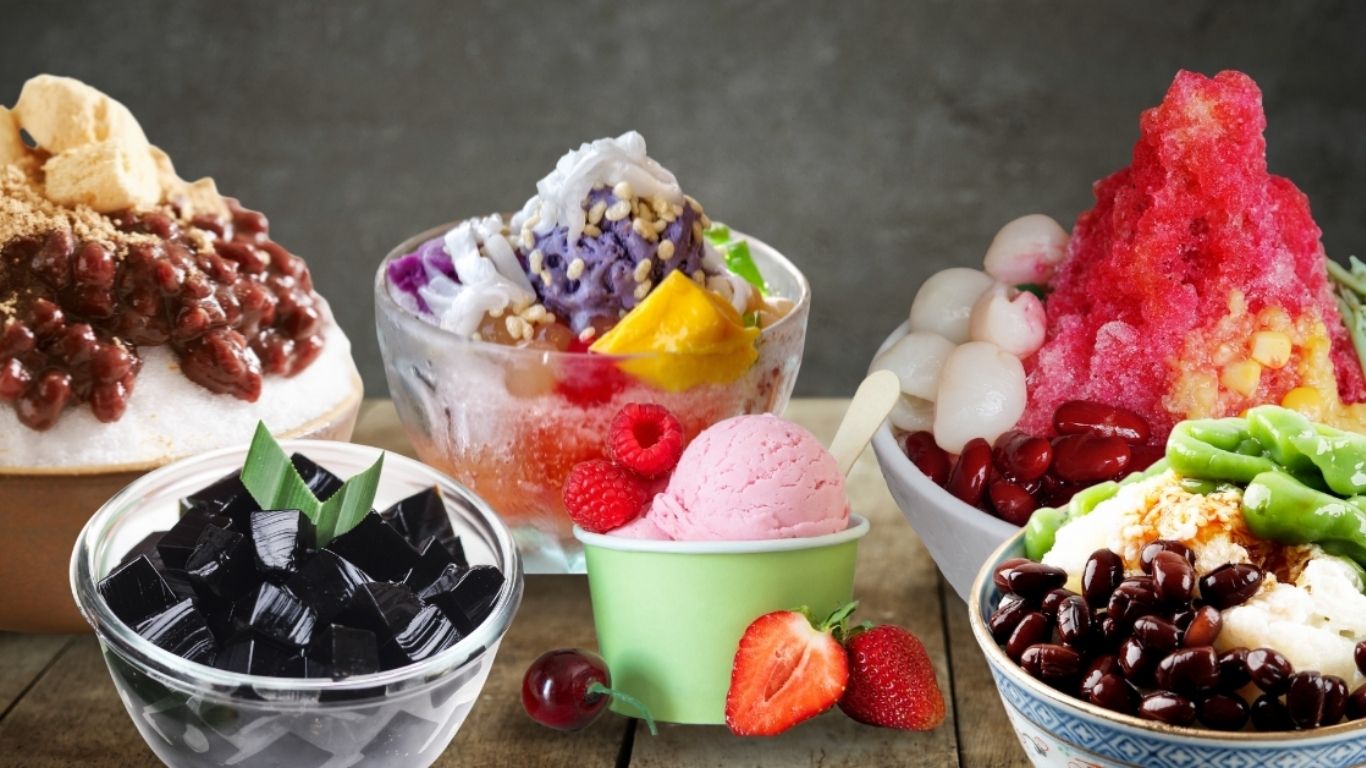Singapore is not only a melting pot of races; it is a feast of cuisines. And when it comes to pastries, conventional Singaporean treats are a confirmation to this multicultural concordance.
Established in Malay, Chinese, Indian, and Peranakan impacts, these desserts bring together wealthy surfaces, dynamic colors, and exceptional tastes. In this direct, investigate the most adored traditional Singaporean desserts, their history, fixings, and where to discover them.
1. Chendol: A Coconut Cream Dream
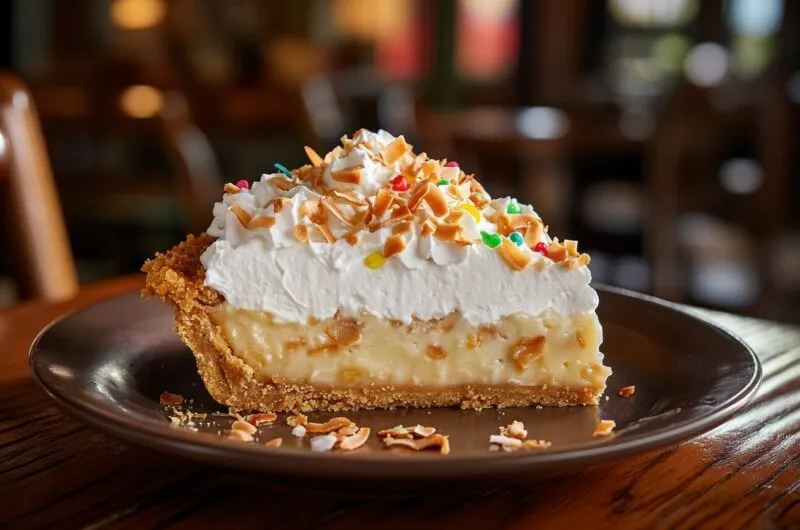
Chendol is seemingly Singapore’s most notorious dessert. This cold delight has reddish beans, green pandan jam noodles, and a generous amount of gula melaka (palm sugar syrup) on top of coconut milk and shaved ice.
Key Fixings: Pandan jam, coconut drain, ruddy beans, gula melaka
Cultural Noteworthiness: Prevalent amid hot evenings, Chendol offers moment refreshment and has profound roots in Malay and Indonesian cuisines.
Where to Attempt: Ancient Amoy Chendol, Geylang Serai Market
2. Ice Kachang: Rainbow in a Bowl
A mountain of shaved ice covered in syrups of various tastes, such as rose, sarsi, and pandan, is known as Ice Kachang. Covered up underneath are treasures such as sweet corn, ruddy beans, grass jam, and attap seeds.
Why It's Adored: This dessert is both lively and fulfilling, idealize for cooling down on muggy days.
Variations: Advanced forms incorporate garnishes like durian, matcha, or indeed chocolate sauce.
Read More: Exploring the Flavors of Singapore Mei Fun
3. Pulut Hitam: Sticky Dark Glutinous Rice Pudding
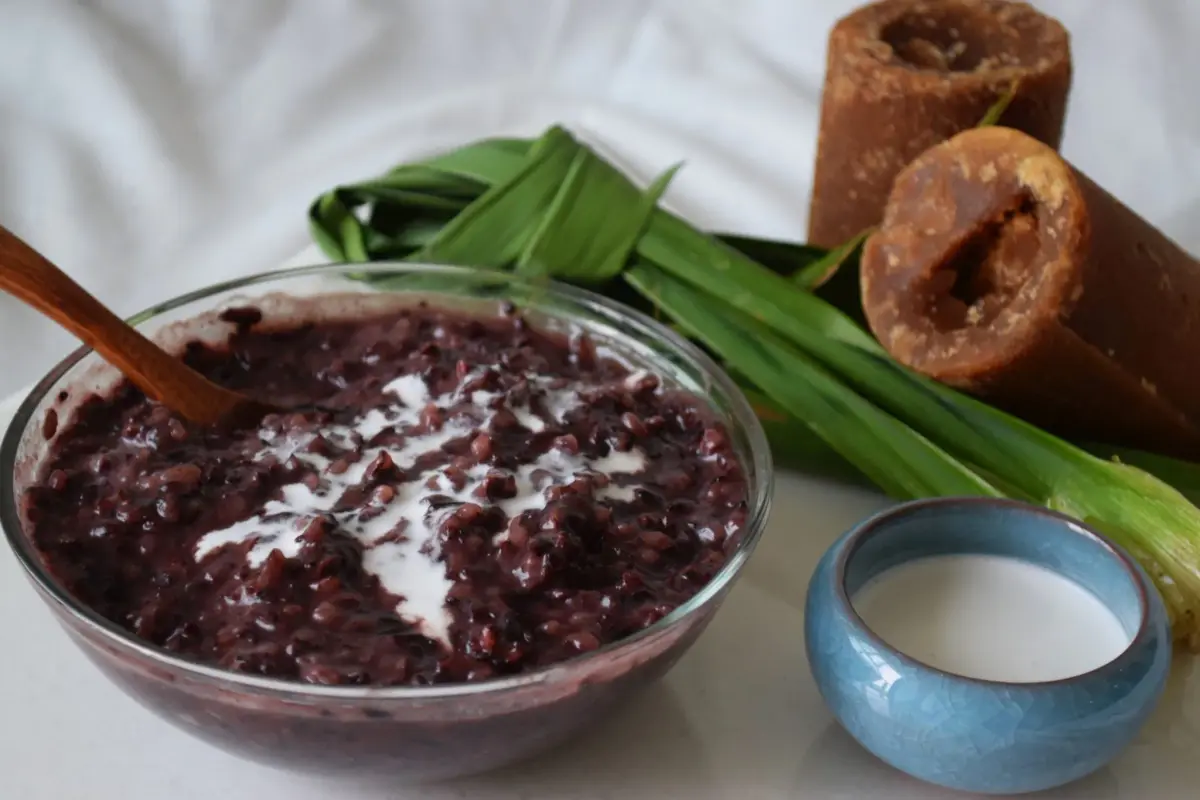
This velvety dark rice dessert is slow-cooked and served warm, topped with coconut cream. It's sweet, sticky, and aromatic—perfect consolation food.
Main Fixings: Dark glutinous rice, coconut drain, sugar
Traditional Utilize: Regularly served amid family social occasions or celebrations in Malay homes.
Pro Tip: Veggie lover and gluten-free—this dessert ticks the health-friendly boxes too!
4. Tau Suan: Sweet Part Mung Bean Soup
Tau Suan is a warm dessert made of part mung beans stewed in syrup and served with fresh pieces of you tiao (browned mixture fritters).
Taste Profile: Sweet, thick, and somewhat savory from the fresh fritters
When to Appreciate: A well known morning or late-night snack
Common Places to Attempt: Tiong Bahru Nourishment Middle, Bedok Compatibility Seller Centre
5. Kueh Lapis: The Rainbow Cake of Southeast Asia
Literally meaning "layer cake," this steamed, colorful charm is made with rice flour and coconut drain. Each layer peels separated, making it a nostalgic favorite among locals.
Cultural Association: A staple in Peranakan cooking and regularly highlighted amid Chinese Modern Year or merry events.
Texture Conversation: Delicate, chewy, and marginally bouncy
6. Pandan Chiffon Cake: Delicate, Fragrant, and Iconic
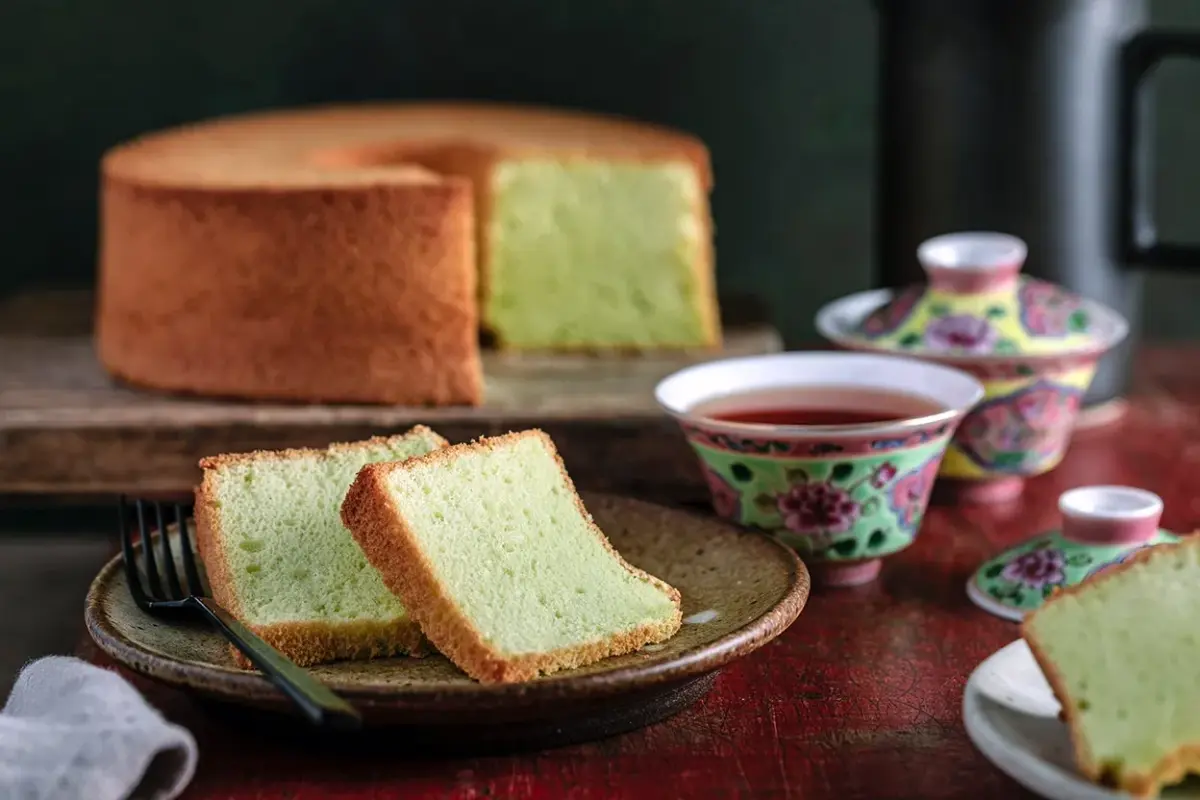
Voted one of Singapore’s national cakes, the Pandan Chiffon Cake is light, cushy, and extraordinarily green much obliged to the fragrant pandan leaf extract.
Ingredients to Adore: Pandan juice, eggs, flour, coconut milk
Modern Bend: It’s presently regularly sold in cafes and combined with coffee or bubble tea
Fun Reality: It combines western preparing strategies with Asian flavors
7. Kueh Salat: A Illustrious Green Delight
This dish consists of two layers: sticky glutinous rice at the bottom and a layer of custardy pandan beat at the top.
Where It Comes From: Peranakan heritage
Why It's One of a kind: The blend of savory and sweet in one bite
Best Served With: A glass of hot tea amid teatime
8.Steamed Rice Cakes with Gula Melaka, or Putu Piring
A treat with strong Malay and Indian origins, putu piring is made of soft rice flour cakes filled with liquid palm sugar and steam-cooked in a flower-shaped mold.
Best Portion: The gooey, sweet core
Traditional Matching: Frequently eaten warm with ground coconut
9. Bubur Cha Cha: A Colorful Dessert Soup
Bubur Cha Cha is a rich, vibrant dessert soup made with sweet potatoes, coconut drain, custard jam, and occasionally bananas.
Flavor Notes: Rich, gently sweet, with delicate chewy textures
Occasion: Usually enjoyed on noteworthy and religious occasions
Healthy Turn: Presently accessible in low-sugar adaptations for advanced diets
10. Orh Nee: Taro Glue for Uncommon Occasions
This Teochew-origin dessert is a wealthy, smooth taro glue regularly topped with gingko nuts and a sprinkle of coconut cream or lard.
Main Offer: Its rich surface and normal sweetness
Modern Touch: Frequently made more beneficial with less oil and plant-based milk
Event Blending: Commonly served at conventional Chinese banquets
The Part of Sweets in Singaporean Culture
Traditional pastries in Singapore do more than fulfill sweet cravings—they carry legacy. Passed down through eras, numerous are related with celebrations like Chinese Unused Year, Hari Raya, Deepavali, and weddings.
Traditional sweet snacks in Singapore
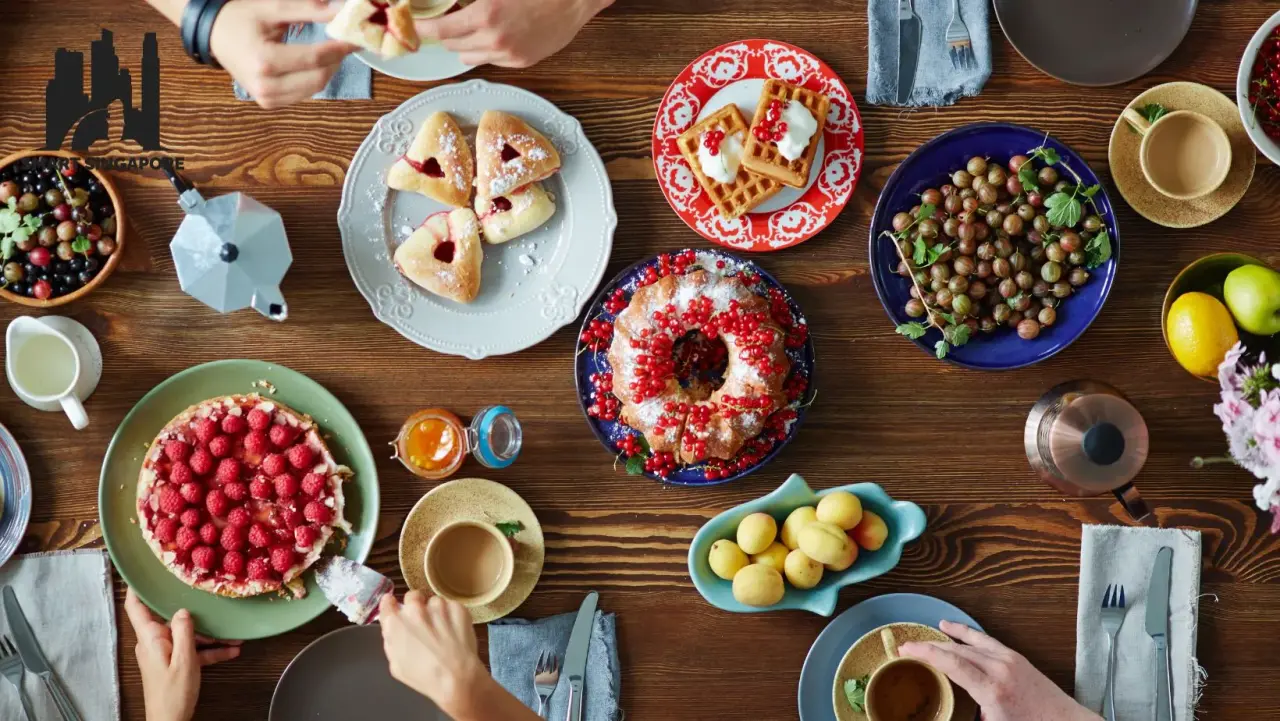
Top Dessert Spots in Singapore:
- Bengawan Solo: Known for Kueh and Pandan cakes
- HarriAnns Nonya Table: Offers perfectly made conventional Kueh
- Old Amoy Chendol: Exceedingly appraised for its classic chendol
- Haig Street Vendor Middle: Reasonable, true dessert stalls
- Tiong Bahru Showcase: A incredible spot for legacy sweet treats
Healthy Takes on Traditional Singaporean Desserts
Modern health-conscious foodies are not cleared out out. Numerous conventional pastries are presently accessible in:
- Low-sugar versions
- Dairy-free (coconut milk-based) alternatives
- Gluten-free kuehs (made with rice/tapioca flour)
Popular Modifications:
- Stevia or friar natural product instep of sugar
- Baked instep of fried
- Reduced coconut cream or supplanted with oat milk
Key Takeaways
- Traditional Singaporean sweets are profoundly established in multicultural heritage.
- They include one of a kind fixings like pandan, gula melaka, and glutinous rice.
- From dynamic kueh to rich porridges, there’s a dessert for each palate.
- Most are accessible in seller centres, cafes, and legacy slows down over the island.
- With cutting edge wellbeing patterns, low-sugar and vegetarian alternatives are picking up popularity.
Conclusion
The world of conventional Singaporean sweets is as differing as it is scrumptious. Each dessert tells a story—of relocation, adjustment, and celebration. Whether you're a nearby remembering childhood favorites or a guest energetic for true flavors, these sweet treats offer an extraordinary taste of Singapore’s social soul.
Frequently Inquired Questions (FAQs)
Q1. What is Singapore's most popular traditional dessert?
Chendol and Ice Kachang are among the most prevalent due to their cooling impacts and nostalgic appeal.
Q2. Are Singaporean sweets vegetarian-friendly?
Yes! Numerous are plant-based or can be adjusted to be veggie lover or vegan.
Q3. Where can I learn to make these at home?
Attempt YouTube channels like “The MeatMen SG” or connect workshops at the Asian Culinary Institute.
Q4. Are these sweets accessible year-round?
Most are, particularly in seller centres and legacy pastry kitchens.

